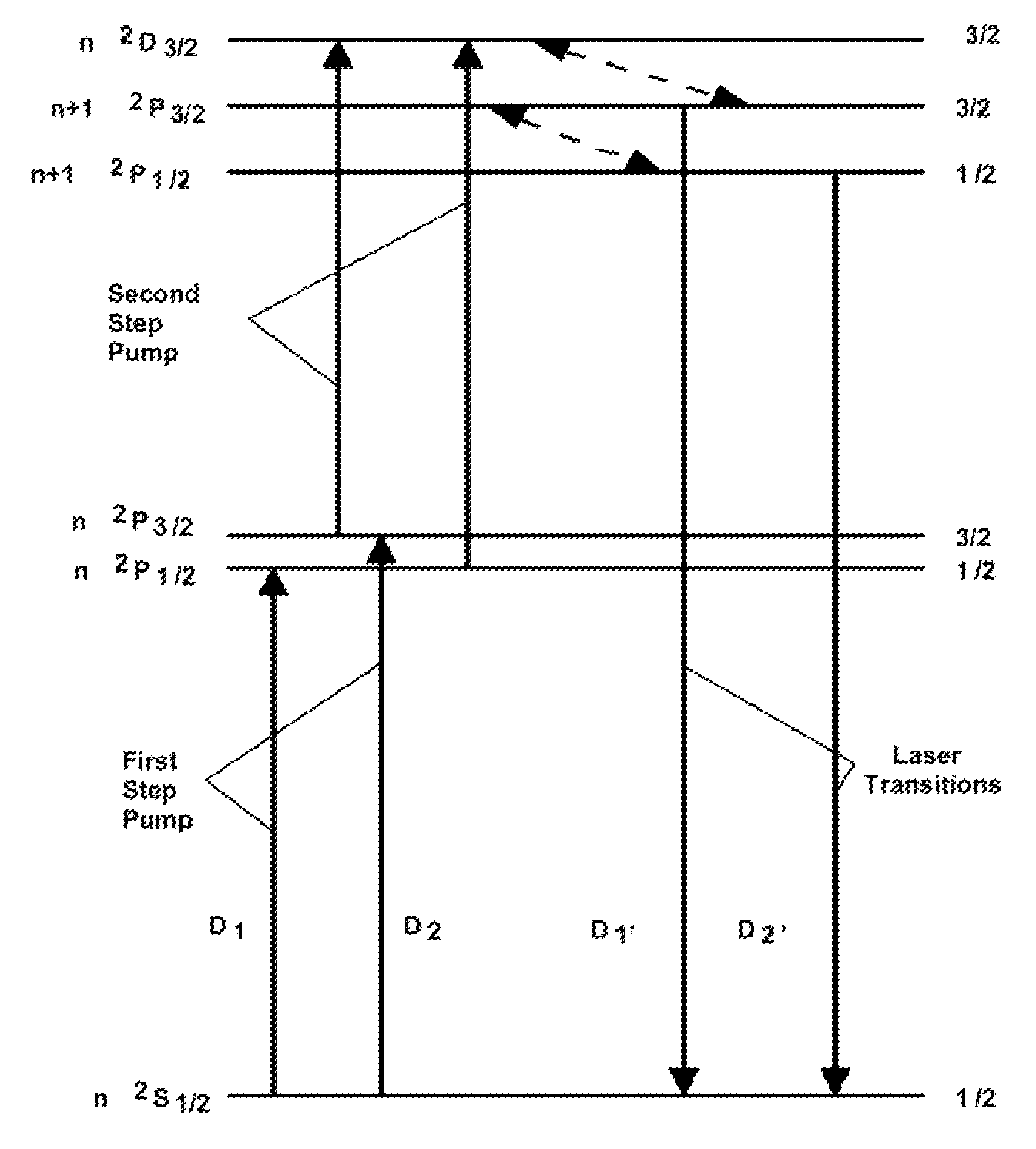Ultraviolet triply-optically-pumped atomic lasers (TOPAL)
a technology of atomic lasers and atomic beams, applied in the field of continuous wave lasers, can solve the problems of reducing the efficiency of uv sources, requiring extensive electrical power conditioning and active cooling, and generally providing low output power of uv sources, and achieves the effects of reducing the cost of operation
- Summary
- Abstract
- Description
- Claims
- Application Information
AI Technical Summary
Benefits of technology
Problems solved by technology
Method used
Image
Examples
Embodiment Construction
[0061]First consider TOPALs employing neutral alkali atoms. Each neutral alkali atom possesses a single valance electron. Each electronic energy level available to this valance electron is distinguished by values of the four “good” quantum numbers: n, S, L and J=L±S (principle spin, orbital, and total angular momentum, respectively), and is labeled by n(2S+1)L(2J+1). Further, since for a single valance electron all levels have S=1 / 2 alkali atom electronic levels are labeled by n 2L(2J+1). The quantum number L can take values of 0, 1, 2 etc. When L=0, J=1 / 2, and such electronic levels are labeled n 2S1 / 2. When L=1, J=1 / 2, or 3 / 2, and such levels are labeled n 2P1 / 2 or n 2P3 / 2. When L=2, J=J=3 / 2, or 5 / 2, and such levels are labeled a n 2D3 / 2 or n 2D5 / 2 . As the mass of the alkali atom increases monotonically in its column of the Periodic Table, the electron shells are progressively filled and the value of n assumes a minimum value: Li, n≧2; Na, n≧3; K, n≧4; Rb, n≧5; Cs, n≧6, (Note thi...
PUM
 Login to View More
Login to View More Abstract
Description
Claims
Application Information
 Login to View More
Login to View More - R&D
- Intellectual Property
- Life Sciences
- Materials
- Tech Scout
- Unparalleled Data Quality
- Higher Quality Content
- 60% Fewer Hallucinations
Browse by: Latest US Patents, China's latest patents, Technical Efficacy Thesaurus, Application Domain, Technology Topic, Popular Technical Reports.
© 2025 PatSnap. All rights reserved.Legal|Privacy policy|Modern Slavery Act Transparency Statement|Sitemap|About US| Contact US: help@patsnap.com



